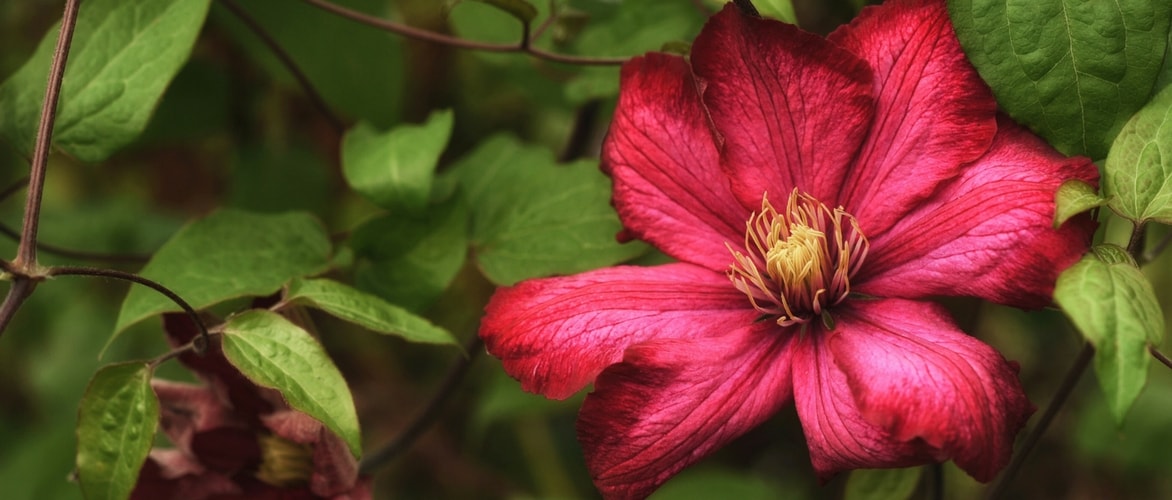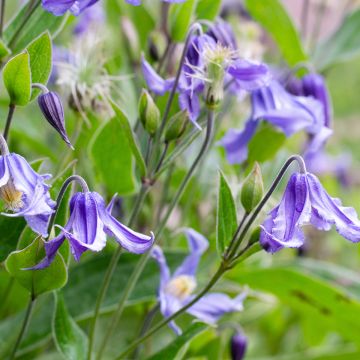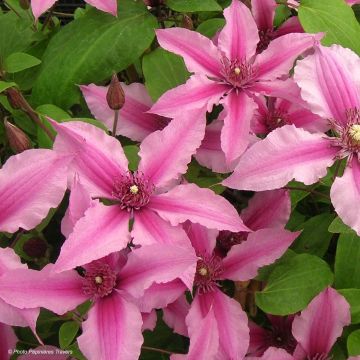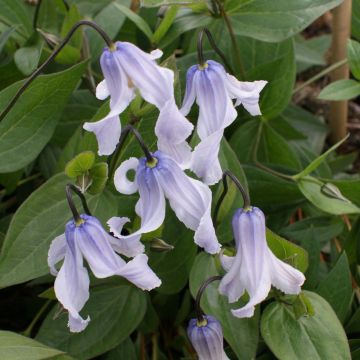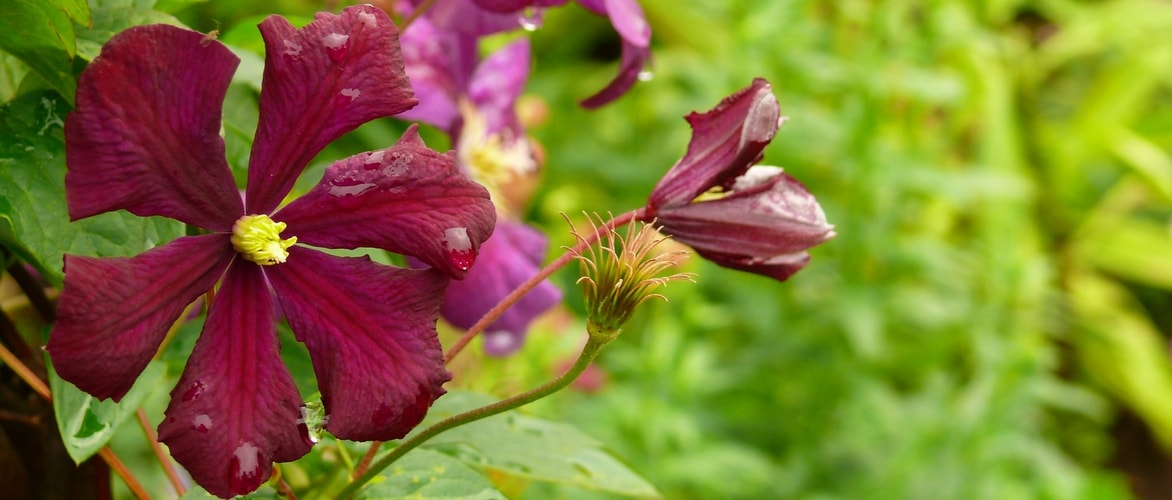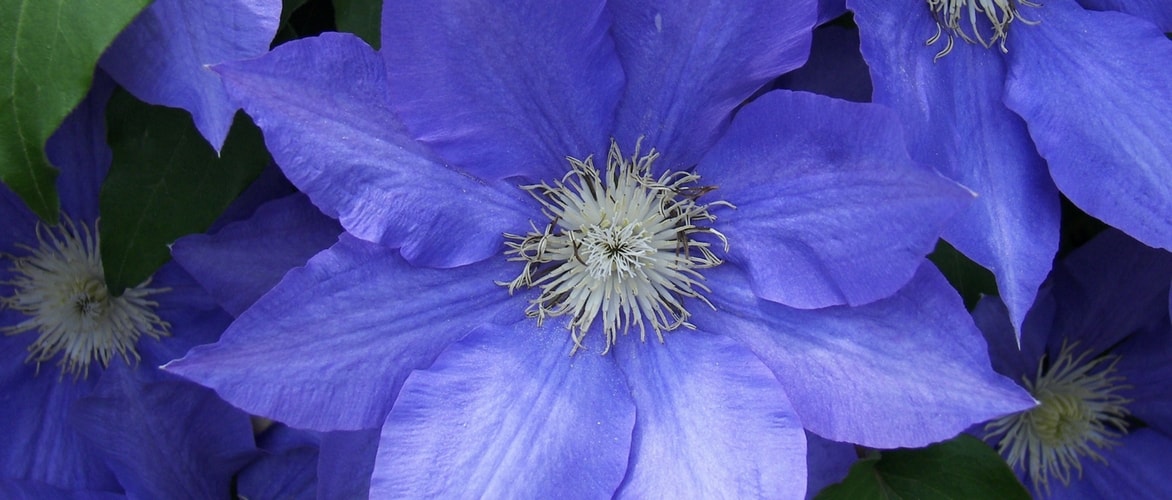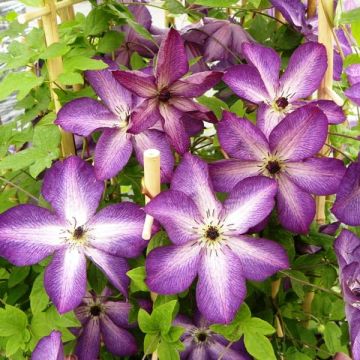

Clematis integrifolia Blue River
Clematis integrifolia Blue River
Clematis integrifolia Blue River Zoblueriver
Special offer!
Receive a €20 voucher for any order over €90 (excluding delivery costs, credit notes, and plastic-free options)!
1- Add your favorite plants to your cart.
2- Once you have reached €90, confirm your order (you can even choose the delivery date!).
3- As soon as your order is shipped, you will receive an email containing your voucher code, valid for 3 months (90 days).
Your voucher is unique and can only be used once, for any order with a minimum value of €20, excluding delivery costs.
Can be combined with other current offers, non-divisible and non-refundable.
Home or relay delivery (depending on size and destination)
Schedule delivery date,
and select date in basket
This plant carries a 6 months recovery warranty
More information
We guarantee the quality of our plants for a full growing cycle, and will replace at our expense any plant that fails to recover under normal climatic and planting conditions.
Would this plant suit my garden?
Set up your Plantfit profile →
Description
Clematis Blue River ('Zoblueriver') is a low-climbing variety with moderate growth, which produces an abundance of bell-shaped flowers in a soft mauve-blue, opening into large stars on a glorious bouquet of creamy stamens. It forms a lush clump on which flowers bloom throughout summer. The vegetation of this clematis, like that of many perennials, completely disappears in winter. It is a hardy and very long-lasting plant that grows and flowers for many years. It works well in pots as well as in open ground. Its flowers are also very long-lasting in a vase. It is unjustly overlooked and underused in our gardens.
The genus Clematis belongs to the Ranunculaceae family. Clematis Blue River is a horticultural hybrid. This variety is derived, among others, from C. integrifolia, the single-leafed clematis, an herbaceous species with a woody base originating from southern Europe, central Europe, Russia, and China. Blue River is a low-climbing perennial plant with long leafy stems that forms a bushy clump reaching 1 to 1.5m (3 to 5ft) in all directions in open ground. It can be trained on a support or left free. Slow to establish, the plant roots deeply in the soil before showing exponential growth in the following years, becoming moderately suckering after a few years of cultivation. Each spring, a multitude of stems emerge directly from its base. They bear entire, ovate to elliptical leaves, of a slightly glossy medium green. The flowers bloom abundantly from June to September along almost the entire length of the stems, emerging above the foliage. They are bell-shaped when they open, composed of 4 to 5 swollen sepals. Then they straighten up and open almost flat, reaching 6cm (2in) in diameter. They are composed of 6 elliptical sepals that are deeply veined and slightly undulate. They boast a shade of lavender-blue, fading to a bright sky-blue (especially on the edges). They surround a beautiful bouquet of creamy stamens. The flowering is followed by the formation of decorate silver fruits at the end of the season. This clematis prefers sunny but not scorching situations.
Plant Clematis Blue River alongside ground-cover roses, bushes, or climbers to accompany their flowering or fill in their bare base. Clematis represents a genus rich in diversity, with all colours, shapes, and sizes. Take advantage of their easy cultivation to give your garden a romantic and bohemian touch. The exquisite Clematis Blue River will thrive perfectly in a pot on a balcony, a patio, at the corner of a wall, or in a bed overrun with perennial sweet peas, variegated ivy, small-flowered periwinkles, gauras, and bellflowers. You can use the cut flowers to create romantic or country-style bouquets.
Clematis integrifolia Blue River in pictures
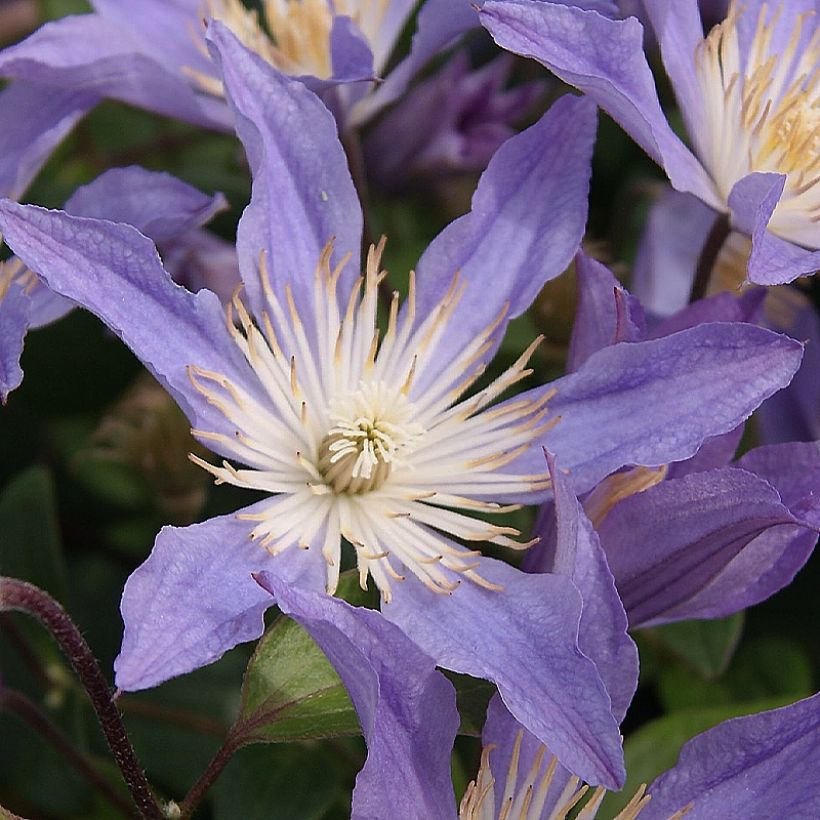



Plant habit
Flowering
Foliage
Botanical data
Clematis
integrifolia
Blue River Zoblueriver
Ranunculaceae
Cultivar or hybrid
Other Clematis Integrifolia
View all →Planting and care
Clematis Blue River is not very demanding, but it prefers moist but well-drained soil that is rich in humus. However, it can adapt to any properly loosened and relatively deep garden soil that is not too dry in summer. This plant is vigorous and very hardy. It prefers partial shade and requires plenty of light to flower properly. Nevertheless, this plant dreads the scorching sun. Sometimes slow to establish, it roots deeply before taking off and can eventually become slightly suckering. It is a carefree plant that is easy to grow. It lasts a long time in the garden. It can also be grown in a large pot with regular watering and fertiliser applications.
Planting period
Intended location
Care
Planting & care advice
This item has not been reviewed yet - be the first to leave a review about it.
Similar products
Haven't found what you were looking for?
Hardiness is the lowest winter temperature a plant can endure without suffering serious damage or even dying. However, hardiness is affected by location (a sheltered area, such as a patio), protection (winter cover) and soil type (hardiness is improved by well-drained soil).

Photo Sharing Terms & Conditions
In order to encourage gardeners to interact and share their experiences, Promesse de fleurs offers various media enabling content to be uploaded onto its Site - in particular via the ‘Photo sharing’ module.
The User agrees to refrain from:
- Posting any content that is illegal, prejudicial, insulting, racist, inciteful to hatred, revisionist, contrary to public decency, that infringes on privacy or on the privacy rights of third parties, in particular the publicity rights of persons and goods, intellectual property rights, or the right to privacy.
- Submitting content on behalf of a third party;
- Impersonate the identity of a third party and/or publish any personal information about a third party;
In general, the User undertakes to refrain from any unethical behaviour.
All Content (in particular text, comments, files, images, photos, videos, creative works, etc.), which may be subject to property or intellectual property rights, image or other private rights, shall remain the property of the User, subject to the limited rights granted by the terms of the licence granted by Promesse de fleurs as stated below. Users are at liberty to publish or not to publish such Content on the Site, notably via the ‘Photo Sharing’ facility, and accept that this Content shall be made public and freely accessible, notably on the Internet.
Users further acknowledge, undertake to have ,and guarantee that they hold all necessary rights and permissions to publish such material on the Site, in particular with regard to the legislation in force pertaining to any privacy, property, intellectual property, image, or contractual rights, or rights of any other nature. By publishing such Content on the Site, Users acknowledge accepting full liability as publishers of the Content within the meaning of the law, and grant Promesse de fleurs, free of charge, an inclusive, worldwide licence for the said Content for the entire duration of its publication, including all reproduction, representation, up/downloading, displaying, performing, transmission, and storage rights.
Users also grant permission for their name to be linked to the Content and accept that this link may not always be made available.
By engaging in posting material, Users consent to their Content becoming automatically accessible on the Internet, in particular on other sites and/or blogs and/or web pages of the Promesse de fleurs site, including in particular social pages and the Promesse de fleurs catalogue.
Users may secure the removal of entrusted content free of charge by issuing a simple request via our contact form.
The flowering period indicated on our website applies to countries and regions located in USDA zone 8 (France, the United Kingdom, Ireland, the Netherlands, etc.)
It will vary according to where you live:
- In zones 9 to 10 (Italy, Spain, Greece, etc.), flowering will occur about 2 to 4 weeks earlier.
- In zones 6 to 7 (Germany, Poland, Slovenia, and lower mountainous regions), flowering will be delayed by 2 to 3 weeks.
- In zone 5 (Central Europe, Scandinavia), blooming will be delayed by 3 to 5 weeks.
In temperate climates, pruning of spring-flowering shrubs (forsythia, spireas, etc.) should be done just after flowering.
Pruning of summer-flowering shrubs (Indian Lilac, Perovskia, etc.) can be done in winter or spring.
In cold regions as well as with frost-sensitive plants, avoid pruning too early when severe frosts may still occur.
The planting period indicated on our website applies to countries and regions located in USDA zone 8 (France, United Kingdom, Ireland, Netherlands).
It will vary according to where you live:
- In Mediterranean zones (Marseille, Madrid, Milan, etc.), autumn and winter are the best planting periods.
- In continental zones (Strasbourg, Munich, Vienna, etc.), delay planting by 2 to 3 weeks in spring and bring it forward by 2 to 4 weeks in autumn.
- In mountainous regions (the Alps, Pyrenees, Carpathians, etc.), it is best to plant in late spring (May-June) or late summer (August-September).
The harvesting period indicated on our website applies to countries and regions in USDA zone 8 (France, England, Ireland, the Netherlands).
In colder areas (Scandinavia, Poland, Austria...) fruit and vegetable harvests are likely to be delayed by 3-4 weeks.
In warmer areas (Italy, Spain, Greece, etc.), harvesting will probably take place earlier, depending on weather conditions.
The sowing periods indicated on our website apply to countries and regions within USDA Zone 8 (France, UK, Ireland, Netherlands).
In colder areas (Scandinavia, Poland, Austria...), delay any outdoor sowing by 3-4 weeks, or sow under glass.
In warmer climes (Italy, Spain, Greece, etc.), bring outdoor sowing forward by a few weeks.






























